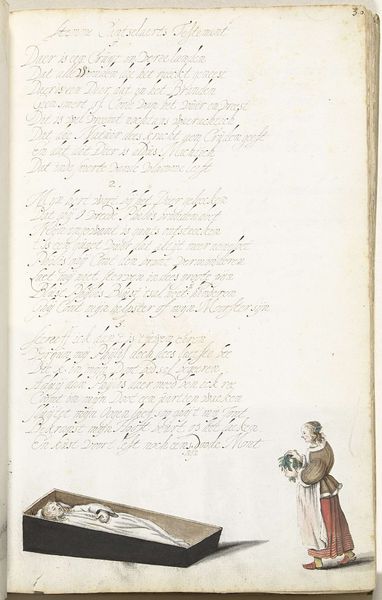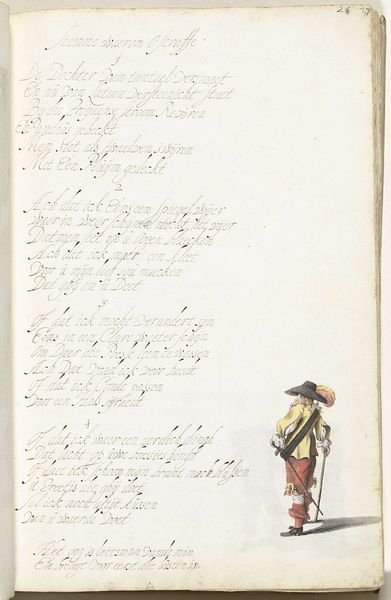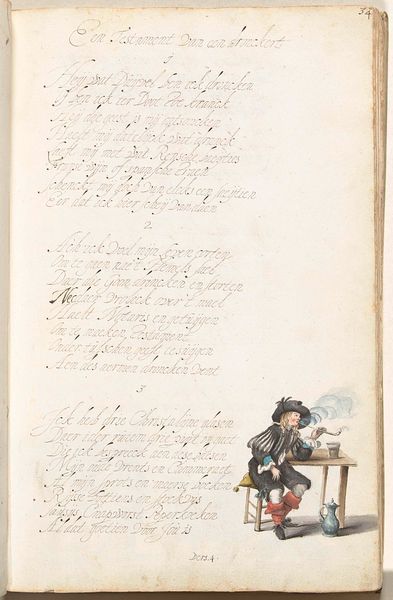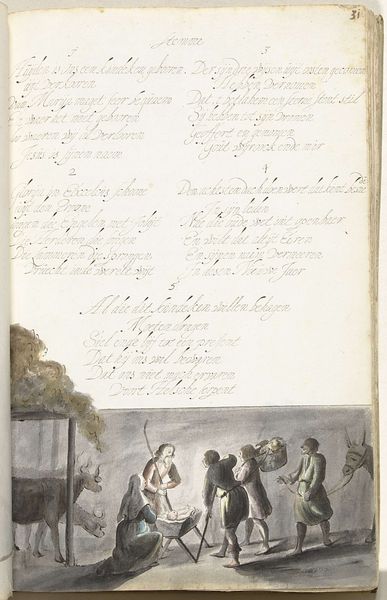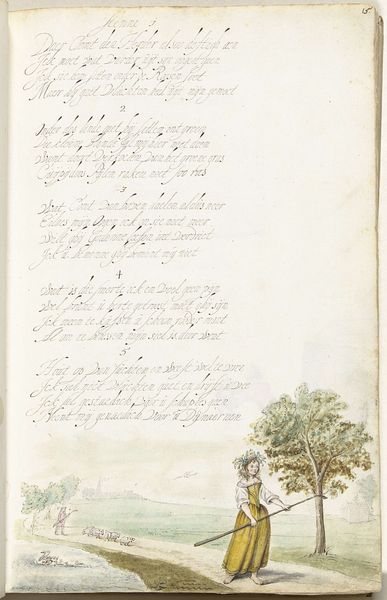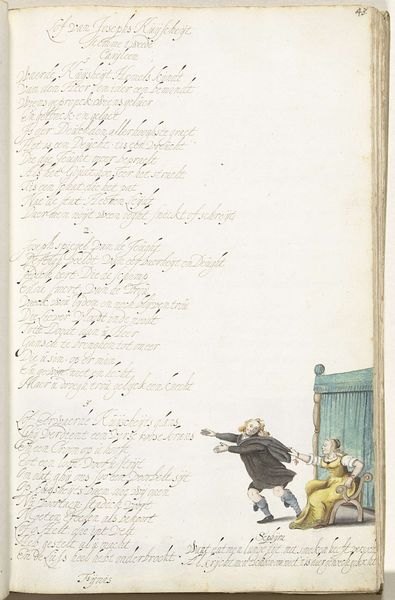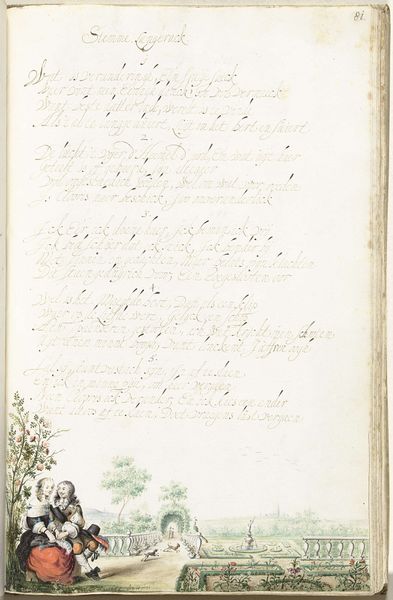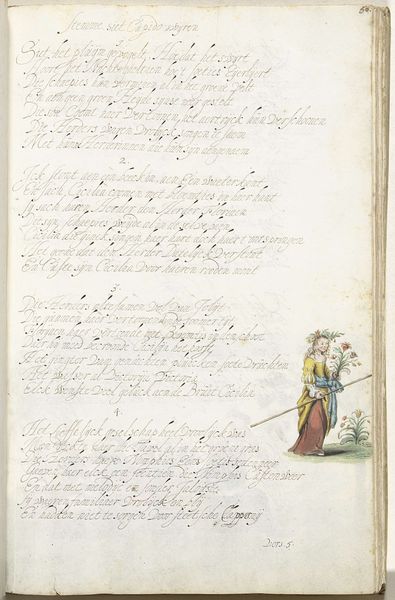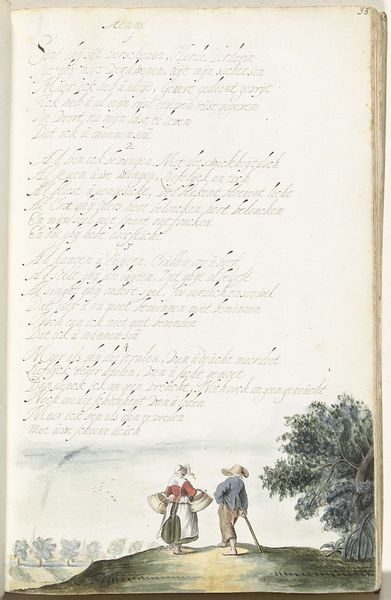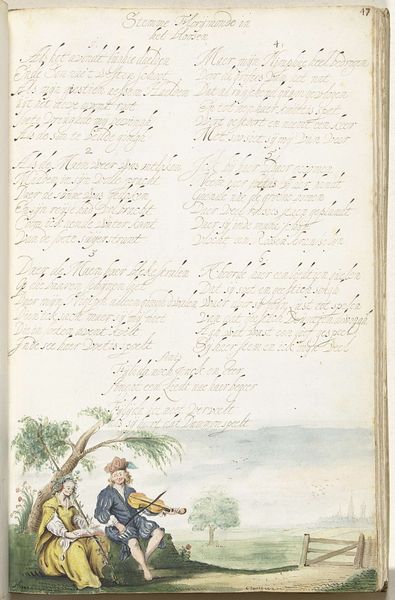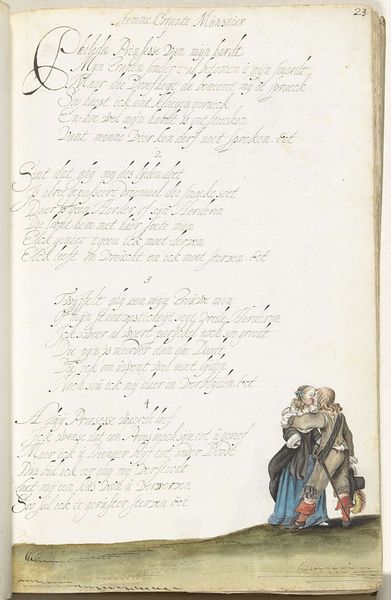
drawing, watercolor, ink
#
drawing
#
narrative-art
#
dutch-golden-age
#
figuration
#
watercolor
#
ink
#
coloured pencil
#
genre-painting
#
watercolor
Dimensions: height 313 mm, width 204 mm
Copyright: Rijks Museum: Open Domain
Curator: What strikes me immediately is the odd juxtaposition of the elegant script with the somewhat disturbing image. It's unsettling. Editor: That's understandable. This artwork, attributed to Gesina ter Borch, created circa 1652-1653, is titled "Bakker die een kat in een oven gooit"—"Baker Throwing a Cat into an Oven." The medium is a combination of ink and watercolor. Curator: So, the image directly reflects the text. What I find fascinating is how the imagery itself clashes with the domestic sphere it seems to evoke. Cats often symbolize domesticity and comfort, but here, that symbol is subverted into something quite cruel. Was this some common form of punishment? Editor: Perhaps, or a commentary on cruelty itself. The oven in the drawing acts as a visual metaphor—a space typically associated with nourishment and warmth becoming an instrument of torture. Symbolically, ovens are often tied to transformative processes... but here, that process is inverted into something malicious. The cat, historically representing both good luck and, at times, feminine mystique, suffers this violence, pointing toward social commentary and anxieties of the time. It is definitely no longer cute. Curator: Absolutely. You mentioned 'anxieties.' I see this within a broader context. The act of violence against the cat, rendered in such a casual manner, possibly symbolizes a breakdown of social norms or some power dynamic related to women. Given that Gesina ter Borch was a woman artist, it might also question female participation in this form of violence, in its acceptance or rejection. Editor: It definitely suggests complex layered meanings, pointing us away from any singular, clear interpretation. Curator: Indeed. The power resides in its ambiguity. Seeing it this way has changed my initial perspective significantly. Editor: Mine as well. It prompts consideration of not only historical context but also the persistent power of symbols to disturb and provoke even across centuries.
Comments
No comments
Be the first to comment and join the conversation on the ultimate creative platform.
